Frost Protection - UTL Repository
Frost Protection - UTL Repository
Frost Protection - UTL Repository
Create successful ePaper yourself
Turn your PDF publications into a flip-book with our unique Google optimized e-Paper software.
ACTIVE PROTECTION METHODS<br />
uniformity is good. Information on how to perform a sprinkler can test is usually<br />
discussed in most textbooks on irrigation management, and guidelines are often<br />
available from local extension advisors. If cold air is known to drift in from a<br />
specific direction, increasing sprinkler density on the upwind edge of the crop,<br />
or even in an open field upwind from the crop, can improve protection. Do not<br />
include the higher density area in the system evaluation area.<br />
Any over-plant irrigation system that delivers an appropriate application rate<br />
can be used for frost protection, but systems specifically designed for frost<br />
protection are best (Rogers and Modlibowska, 1961; Raposo, 1979). The system<br />
needs to be in place during the entire frost season. Once in place and operating<br />
during a frost night, a system cannot be moved. Generally, the distribution<br />
uniformity is improved by using an equilateral triangle rather than rectangular<br />
head spacing. Systems designed for irrigation rather than frost protection can be<br />
used providing uniformity is good and the precipitation rate is adequate. In most<br />
cases, the sprinkler heads should be mounted at 0.3 m or higher above the top of<br />
the plant canopy to prevent the plants blocking the spray. For frost protection,<br />
specially designed springs, which are protected by an enclosure to prevent icing<br />
of the heads, are typically used. Clean filters are needed to be sure that the system<br />
operates properly, especially when river or lagoon water is used.<br />
Portable hand-move sprinkler systems with the heads rising just above the<br />
canopy top can be used for low growing crops like strawberries. For deciduous<br />
trees and vines, use permanent sprinkler systems with either galvanized or<br />
polyvinyl chloride (PVC) pipe risers that place the heads just above the canopy<br />
top. Wooden posts can support the risers. Typical sprinkler head pressures are<br />
380 to 420 kPa with less than 10 percent variation.<br />
Starting and stopping<br />
Starting and stopping sprinklers for frost protection depends on the temperature<br />
and humidity in the orchard. When a sprinkler system is first started, the air<br />
temperature will drop; however, the air temperature will not drop below the<br />
temperature of the water droplets and it will normally rise again once water<br />
begins to freeze and release latent heat.<br />
The effect of over-plant rotating sprinkler application is illustrated in Figure 7.10,<br />
which shows the response of leaf-edge temperature to wetting by sprinklers every<br />
120, 60 or 30 seconds (based on Wheaton and Kidder, 1964). Between wettings,<br />
evaporation (or sublimation) occurs and the phase change from liquid or ice to<br />
water vapour converts sensible to latent heat. The removal of sensible heat causes<br />
temperature of wet plant tissue to fall. Because the plant tissue is wet, the<br />
165


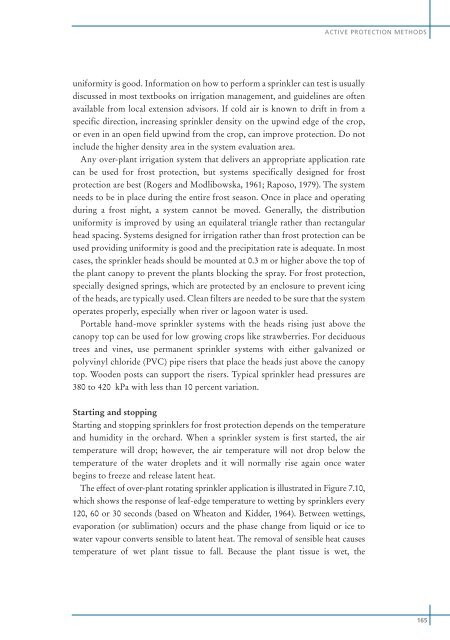
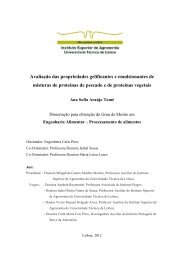
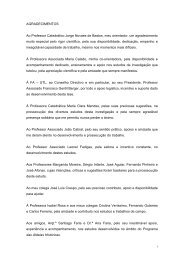
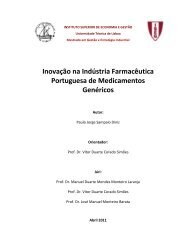
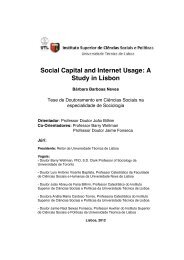
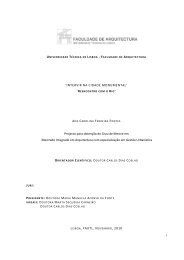
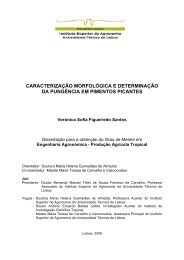

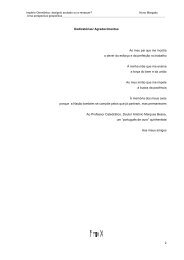
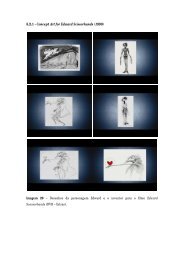
![Tese - Es..[1].pdf - UTL Repository - Universidade Técnica de Lisboa](https://img.yumpu.com/25707135/1/184x260/tese-es1pdf-utl-repository-universidade-taccnica-de-lisboa.jpg?quality=85)


